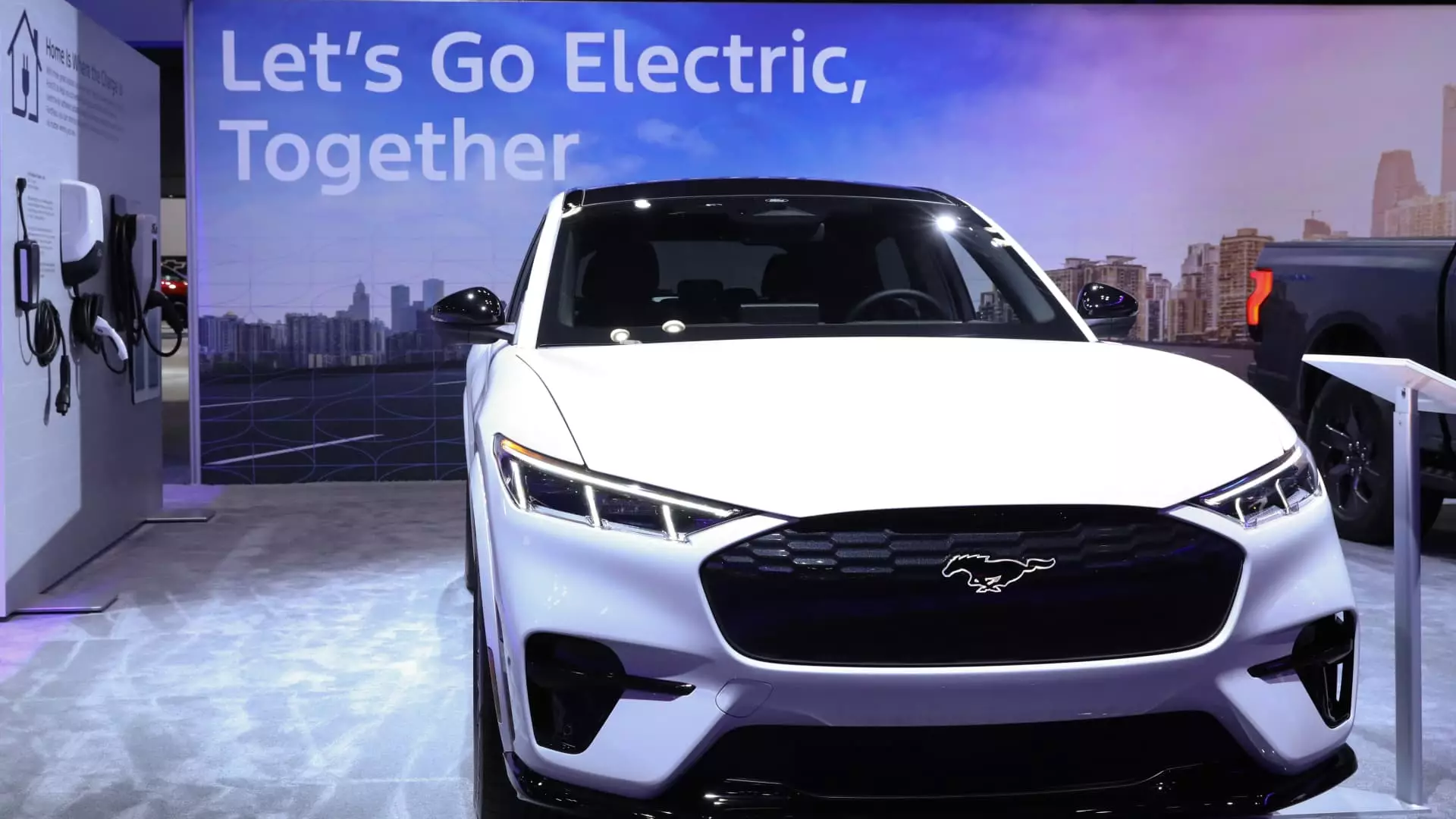Ford Motor’s U.S. new vehicle sales experienced an 11.2% growth in May compared to the previous year, driven by a surge in demand for electric and hybrid models. The company reported a significant increase of approximately 65% in sales of both hybrid and all-electric vehicles, outpacing the 5.6% rise in sales of traditional vehicles with internal combustion engines. However, despite the impressive growth in the alternative fuel segment, hybrid and EV sales combined only accounted for about 14% of Ford’s total sales, totaling around 26,600 vehicles.
The boost in EV sales presents a dual challenge for Ford. While the company aims to expand its electric vehicle sales to support the compliance with stringent fuel economy standards and emissions regulations, its electric vehicle unit, the Model E, has been facing substantial losses. In April, Ford announced that the division recorded a staggering $1.32 billion in losses on 10,000 vehicles sold from January to March, translating to a loss of $132,000 per vehicle sold. This poses a significant financial hurdle for Ford’s efforts to scale up its electric vehicle offerings.
Despite the financial setbacks, Ford saw promising results in specific electric vehicle models in May. Sales of the all-electric F-150 Lightning pickups nearly doubled compared to the previous year, reflecting growing consumer interest in electric trucks. Additionally, the Mustang Mach-E EV reported a 46% increase in sales year over year, indicating a positive reception for Ford’s electric SUVs. These successes demonstrate the potential for growth in the electric vehicle market, despite the challenges faced by the company.
Hybrid Strategy and Future Plans
Ford’s strategic move to focus on hybrid technology as part of its long-term plan is evident in the spike in hybrid vehicle sales. The automaker announced earlier this year that it would delay the production of new all-electric vehicles to prioritize offering hybrid options across its entire North American lineup by 2030. This decision reflects Ford’s commitment to integrating sustainable technology while addressing the evolving demands of the market. The success of hybrid models further reinforces the company’s investment in alternative fuel options.
Overall Sales Performance and Growth
Ford’s total U.S. sales for the year through May stood at 877,685 units, indicating a 5.6% increase compared to the same period in the previous year. The growth has been largely driven by a rise in SUV sales by approximately 10% and a modest uptick of 2.5% in truck and van sales. Despite the challenges faced by the electric vehicle unit, Ford’s overall sales performance reflects a positive trajectory, showcasing the company’s resilience and adaptability in the ever-changing automotive landscape.

